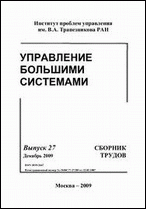|
Mathematical Control Theory
Automatic differentiation in control of constrained rigid-body systems
A. A. Shevlyakov
V.A. Trapeznikov Institute of Control Sciences of Russian Academy of Sciences, Moscow
Abstract:
Currently, many new types of robotic chassis are being developed. These require new approaches to modeling and control, satisfying many hard constraints on performance and quality. The research may be more focused on bipedal and quadrupedal locomotion at the moment, but groups of simple robots are studied as well. In this article, we consider a system of 2 cube robots as a mechanical constrained rigid body system. We use optimization to construct trajectories and find control. Unlike many previous methods, we explore the possibility of differentiating a target function by control variables. This is achieved by using automatic differentiation techniques. We give a brief survey of automatic differentiation, and also of reinforced learning, in the context of which it is now mostly developed. Also, basics of rigid body mechanics are presented, along with most important details of optimization algorithm. We consider several scenarios of robot configurations and goal positions, for which we find control and trajectories. Optimization parameters and hardware characteristics for the numerical experiment are provided. Results are presented as plots and frame sequences.
Keywords:
control, optimization, robotics, complementarity problem.
Received: February 8, 2020
Published: May 31, 2020
Citation:
A. A. Shevlyakov, “Automatic differentiation in control of constrained rigid-body systems”, UBS, 85 (2020), 87–112
Linking options:
https://www.mathnet.ru/eng/ubs1043 https://www.mathnet.ru/eng/ubs/v85/p87
|

| Statistics & downloads: |
| Abstract page: | 120 | | Full-text PDF : | 210 | | References: | 24 |
|




 Contact us:
Contact us: Terms of Use
Terms of Use
 Registration to the website
Registration to the website Logotypes
Logotypes








 Citation in format
Citation in format 